-
×
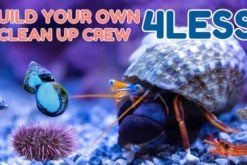 Build Your Own Clean Up Crew 4Less!
1 × $60.74
Build Your Own Clean Up Crew 4Less!
1 × $60.74 -
×
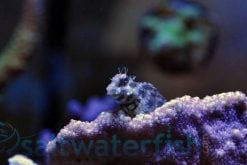 Lawnmower Blenny, Size < 2.25 inches
1 × $13.00
Lawnmower Blenny, Size < 2.25 inches
1 × $13.00 -
×
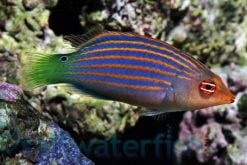 Six Line Wrasse, Size 1.25 - 2.25 inches
1 × $20.00
Six Line Wrasse, Size 1.25 - 2.25 inches
1 × $20.00 -
×
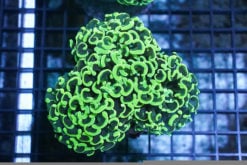 Hammer Coral:Branching Green - Indo Pacific, Size Small
1 × $28.00
Hammer Coral:Branching Green - Indo Pacific, Size Small
1 × $28.00 -
×
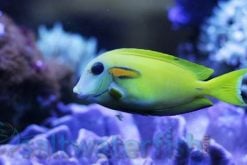 Orange Shoulder Tang - Fiji - MAC Certified, Size < 2.25 inches
1 × $33.99
Orange Shoulder Tang - Fiji - MAC Certified, Size < 2.25 inches
1 × $33.99
Quick Stats:
- Care Level: Moderate
- Temperament: Semi-aggressive
- Diet: Herbivore
- Reef Safe: Yes
- Minimum Tank Size: 75 gallons
- Max Size: 6 inches
- Water Parameters: pH 8.1-8.4, salinity 1.020-1.025, temperature 72-78°F
Comprehensive Guide: Convict Tang (Acanthurus triostegus)
The Convict Tang, or Acanthurus triostegus, is popular in saltwater aquariums. This comprehensive guide will provide you with all the information you need to know about keeping Convict Tangs in your aquarium.
Habitat
The Convict Tang is native to the Indo-Pacific region, specifically the reefs of the Indian Ocean and the western Pacific Ocean. They are commonly found in shallow coastal areas and lagoons with rich coral growth.
Reef Safe
The Convict Tang is considered reef-safe and compatible with most reef aquariums. However, caution should be exercised when introducing them to a reef tank with delicate corals, as they may nip at the polyps.
Size
The Convict Tang can grow up to 6 inches long in the aquarium environment. It is important to provide them with a large enough tank to accommodate their size.
Temperament
The Convict Tang is a semi-aggressive fish. While they generally get along well with other fish, they may become territorial and aggressive towards similar species or smaller fish.
Sexual Dimorphism
The Convict Tang does not exhibit significant sexual dimorphism, making it difficult to distinguish between males and females visually.
Lifespan
The average lifespan of a Convict Tang is around 5 to 10 years, but with proper care, they can live even longer in captivity.
Diet in Aquariums
Convict Tangs are herbivores and require a diet rich in algae and plant matter. It is recommended to provide them with various marine-based seaweed, algae sheets, and high-quality pellet or flake foods specifically formulated for herbivorous fish.
Aquascaping Recommendations
When setting up the aquarium for Convict Tangs, it is important to provide ample swimming space and hiding spots. Incorporating live rock structures and creating open areas for swimming will mimic their natural habitat and promote their well-being.
Captive Bred Availability
The Convict Tang is occasionally available as captive-bred specimens, although most individuals in the aquarium trade are wild-caught. Captive-bred specimens are generally hardier and better acclimated to aquarium conditions.
Compatibility with Other Fish, Invertebrates, or Corals
Convict Tangs can be kept with other fish, invertebrates, and corals. However, caution should be exercised to ensure compatibility when selecting tankmates. Here are five specific tankmates that are known to be good choices:
- Purple Tang (Zebrasoma xanthurum) – Both species have similar care requirements and can coexist peacefully in a larger aquarium.
- Ocellaris Clownfish (Amphiprion ocellaris) – These popular clownfish are known for their compatibility with a wide range of tankmates, including Convict Tangs.
- Firefish Goby (Nemateleotris magnifica) – The peaceful nature of Firefish Gobies makes them suitable tankmates for Convict Tangs.
- Cleaner Shrimp (Lysmata amboinensis) – These shrimp can help with maintaining the cleanliness of the tank and are generally compatible with Convict Tangs.
- Mushroom Corals (Actinodiscus spp.) – Convict Tangs are generally reef-safe and can coexist with mushroom corals without causing harm.
Other Common Names
The Convict Tang is also known by other common names such as Threeband Surgeonfish, Manini, and Triostegus Tang.
Why Buy from Reefs4Less.com
Reefs4Less.com is a reputable online retailer specializing in saltwater aquarium supplies. They offer a wide selection of high-quality fish, corals, and other livestock. With their competitive prices and excellent customer service, Reefs4Less.com is a trusted choice for saltwater aquarium enthusiasts.
Popular Questions and Answers:
Q: What is the recommended tank size for a Convict Tang?
A: The minimum tank size for a Convict Tang is 75 gallons. Providing a larger tank will allow for more swimming space and reduce territorial behavior.
Q: Can Convict Tangs be kept in a reef tank?
A: Yes, Convict Tangs are considered reef safe. However, caution should be exercised when introducing them to a reef tank with delicate corals, as they may nip at the polyps.
Q: How often should Convict Tangs be fed?
A: Convict Tangs should be fed multiple times daily with a varied diet of marine-based seaweed, algae sheets, and high-quality pellet or flake foods specifically formulated for herbivorous fish.
Q: Do Convict Tangs require a specific water flow in the aquarium?
A: While Convict Tangs prefer moderate to strong water flow, it is important to ensure the flow is not too strong, as it may stress the fish or hinder their ability to swim comfortably.
Q: Can Convict Tangs be kept in pairs?
A: Convict Tangs are generally territorial and may exhibit aggression towards similar species. Keeping them singly or in larger tanks with ample swimming space is recommended to reduce territorial disputes.
| Size | 2.25 – 3.25 inches |
|---|
Be the first to review “Convict Tang – Fiji – MAC Certified, Size 1.75 – 2.75 inches”
Recently viewed products
Save 43%
Convict Tang – Fiji – MAC Certified, Size 1.75 – 2.75 inches (Acanthurus triostegus)
Sale price: $35.99
Save 42%
Orange Shoulder Tang – Fiji – MAC Certified, Size < 2.25 inches (Acanthurus olivaceus)
Sale price: $33.99
Save 61%
Save 43%
Golden Domino Damsel – Fiji – MAC Certified, Size < 2 inches (Dascyllus auripinnis)
Sale price: $23.99

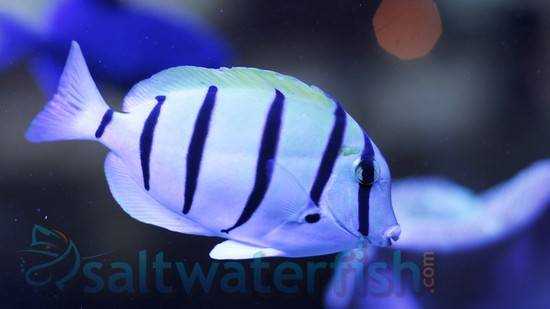
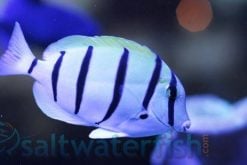
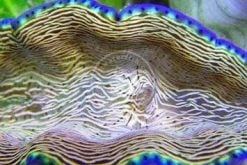

Reviews
There are no reviews yet.